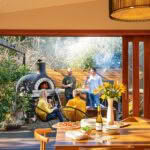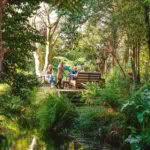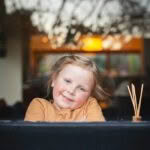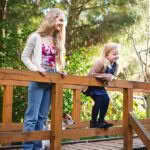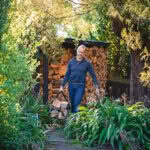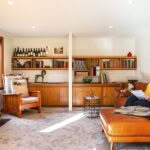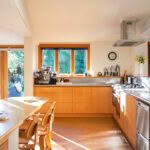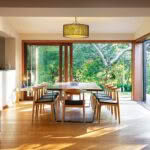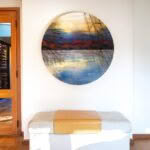Sniff, sip and swirl: It took five years of blind-tasting for Sophie Parker-Thomson to become a master of wine
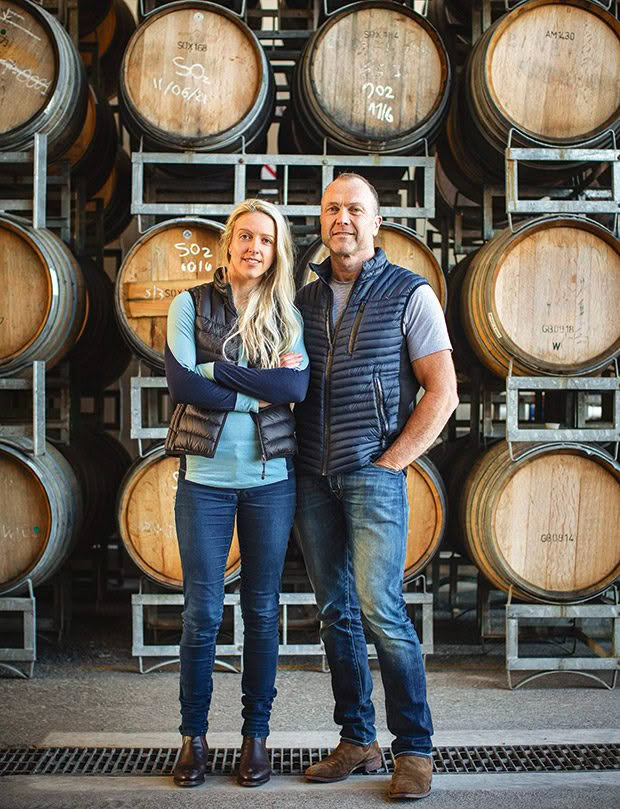
Sophie Parker-Thomson and her husband Matt find wine fascinating, not just for the taste. Sophie says it is for those who love science just as much as it is for anyone passionate about art, history and stories about people.
This Blenheim lawyer-turned-master of wine has always been lured by the grape, from hand-labeling bottles as a child to organizing wine tastings in her first student flat.
Words: Nicole Barratt Photos: Tessa Chrisp
For the past five years, Sophie Parker-Thomson has sat down to dinner with a notebook and pen awaiting a glass of wine poured by her husband, Matt Thomson. As he selects a wine to serve her (with no peeking from Sophie), he sets a two-minute timer.
It’s Olympic-style training, but the competition isn’t sports-related. The win here lies in the correct (blind) identification of the wine. With a sniff, sip and swirl, Sophie must deduce its origin, variety, and year of harvest. Scrawling on her notepad, she has eight minutes to form a convincing argument that the red she tasted is indeed an aged barolo, and not a brunello, for example.
Her pre-dinner training ritual came to its conclusion after five years of study in March this year when Sophie (Ngāi Te Rangi) passed her final examination to become Aotearoa’s newest master of wine. She’s the South Island’s first, joining 15 others based in the North Island.
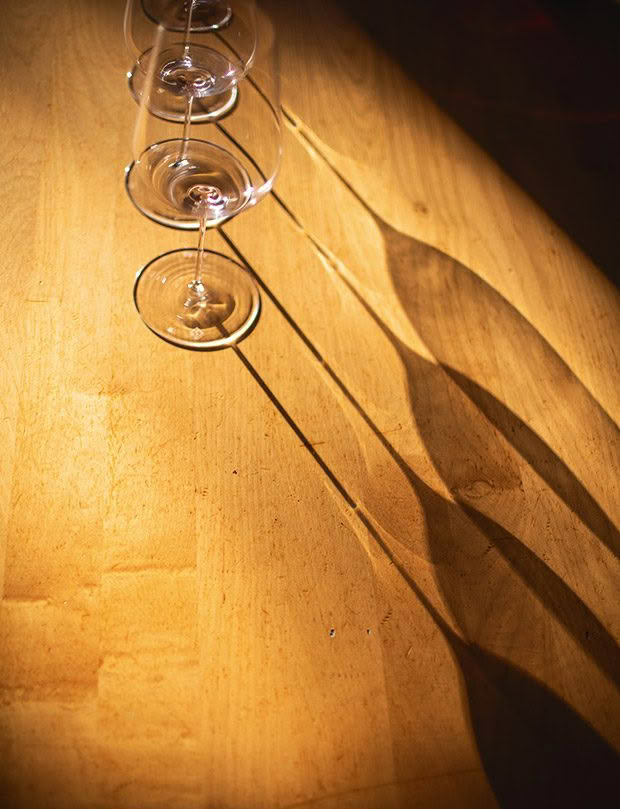
Grapevines were the backdrop to Sophie’s childhood in Gisborne; in the late 1980s, her parents Phil and Catherine Parker were among the pioneers of the region’s grape-growing and winemaking industry. In 1990, they’d opened Smash Palace, a winery and bar in an industrial subdivision of Gisborne that quickly became a much-loved haunt. Phil had found an old Douglas DC-3 airliner in Rotorua, broke it down into parts and towed it home, where he reassembled it to form a canopy for the wine bar.
Sophie and her brothers were roped regularly into helping with the grape harvest, bottling and hand-labeling — work happily offset by being near the surf beach at Midway. In the late 1990s, the Parker family, including 14-year-old Sophie, moved to Central Otago to grow pinot noir grapes, and after a few years, began developing wine tourism venues. They opened a restaurant and wine-tasting complex in Cromwell called The Big Picture, where Sophie initially scrubbed dishes and waited tables.
Then, at 16, she began hosting wine tastings. While her schoolmates babysat or worked in retail to earn their pocket money, Sophie poured glasses of pinot noir and encouraged guests to take deep whiffs. At the same time, and recognizing the heavy workload hospitality demanded of her parents, she vowed she’d never have a career in the same industry.
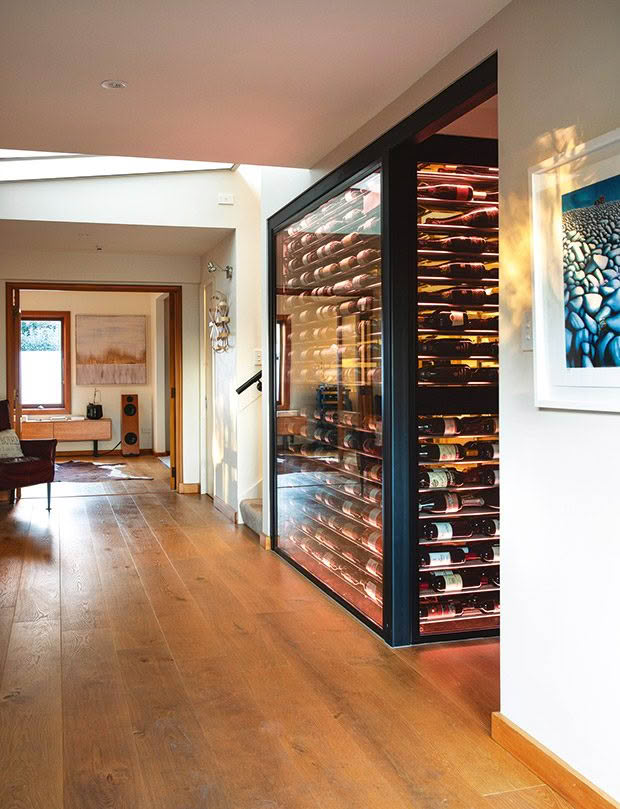
The couple couldn’t build an underground cellar because of their location in Springlands — their water table was too high. Instead, they created an above-ground glass cellar, which led to 13 months’ worth of renovations across the house. “We wanted to respect the character of the house (mid-century) but breathe a bit of modern, fresh Scandi into it”.
“My family hadn’t really been to university, and I loved English and debating, so I decided to study law. They fully supported that and encouraged me to go and become the lawyer of the family.”
Her relationship with alcohol while studying at the University of Otago was somewhat more sophisticated than most Dunedin first-year students. Eighteen-year-old Sophie made it her mission to educate her flatmates on the attractions of wine. “I’d set up tastings in our flat or drag them off to local tastings and into wine shops. I’d save up my student allowance to buy one good bottle of pinot, and that would be my splurge for the week.”
Her friends would scratch their heads, wondering where on earth Sophie was getting notes of passionfruit, banana, and forest floor from after one sniff of wine. “I explained that smell is the most neglected of our senses; we’re taught to read, write and listen, but not to smell. It’s a matter of training it.”

She created a wine-tasting YouTube channel to share her passion. Setting up her laptop on her flat’s dining table to film herself, she posted videos under the name ‘Lady Parker’. The name was a spin on her surname and a reference to Robert Parker, one of the world’s most influential wine critics who lives in the United States. Vlogging was an innovative channel for wine journalism. “It wasn’t high-tech, but wine communication was largely restricted to print, so I was trying to make it a bit more light-hearted and accessible.”
Boxes of wine addressed to Sophie started turning up on her doorstep, much to the delight of her flatmates. Freelance opportunities to write for wine-focused publications followed. “Why not become a master of wine?” Sophie’s mum suggested over dinner at a Dunedin restaurant one evening. Sophie knew the qualification was for those passionate about every element and aspect of wine and that it was notoriously difficult to get. She liked the idea, but her law degree needed finishing first.
- As a student, Matt worked at Auckland’s Prego restaurant making pizza, a skill much appreciated by friends and family.
- Matt cooks over the wood-fired grill using mānuka wood — he is an avid firewood collector. Most often, it’s an aged piece of ribeye beef from the local butcher.
- Gianna, Matt’s daughter from a previous relationship, comes to stay often. Here she joins her sister Isabella (6), and Matt and Sophie in the garden which, with its mix of mature native trees — such as 100-year-old kahikateas — and exotics, is considered the family sanctuary.
- Isabella loves the spring-fed stream at the bottom of the garden. She feeds the eels, which have become quite friendly (and huge).
She returned to Queenstown in 2011 after her admission to the bar, where the mountain air provided a welcome break. Sophie weighed up different employment options; the law on the one hand and wine on the other. As if the Greek wine god Dionysus had a hand in it himself, an email landed in Sophie’s inbox from Matt Thomson, an established consultant winemaker (KO Wine Consultants) in Blenheim.
He had read her freelance articles online and suggested she drive up to Marlborough to spend a wine-making season getting more hands-on experience with the technical side of wine. Sophie didn’t need much persuasion. Blenheim’s endless rows of fruit-laden vines beckoned her with green arms.
The pair quickly found they had plenty in common. Matt (her now-husband) was equally as obsessive about wine, even in his early teens. After watching his parents blind-taste wines at a dinner party, he began reading books on the subject, collecting cases, and stashing them under his bed at 16 (an illegal activity for someone of his age). He later broke the news to his surprised family — all lawyers — that he wanted to become a winemaker.
Matt graduated with a masters in biochemistry (specializing in yeasts as he knew yeasts were key in winemaking), and knocked on winery doors throughout Marlborough before landing his first gig, running a bottling line for a company called Vintech.
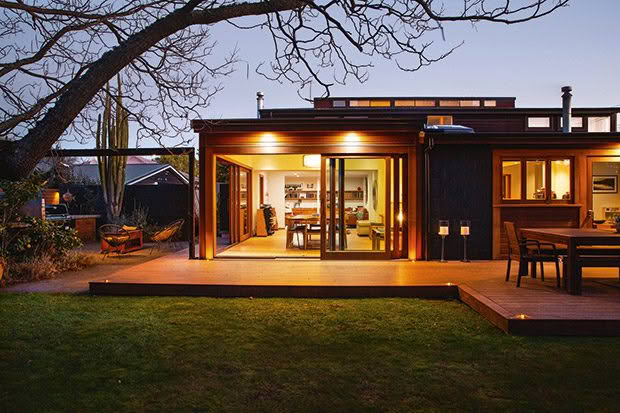
The family lived in their home while builders worked to renovate it. It was busy; daughter Isabella was two at the time, and Sophie was in the middle of studying for the master of wine. Local master builder Neil Hunt headed the project. “He entered it into House of the Year, and it ended up winning the Regional and Supreme Renovation Award, then it went on to the national finals. It was a big deal for him as it was his first time entering. We are still good friends to this day, so that’s saying something.”
Sophie’s first Marlborough vintage was a good one, with a bigger yield than usual and a long growing season. It was stimulating work, and it felt almost like a homecoming. A wine label, Blank Canvas, followed two years later, with Matt and Sophie producing small-batch wines from single vineyards. The couple lists their growers like a close extended family; among them are a former policeman who happily traded handcuffs for pruning shears, a grower with a Cambridge University PhD in soil science and a former air traffic controller.
The idea of the master of wine qualification floated in the back of Sophie’s mind. “I was always daunted by it and filled with self-doubt. I knew how hard it was and how few had passed. But I went for it, and I was lucky to have great support around me.” She completed a two-year Wines and Spirits Education Trust diploma in 2014, and after this (and the birth of daughter Isabella), she cracked into the master of wine programme.
Sophie flew to Australia at least 10 times in five years for the qualification’s yearly tasting and theory exams, which she says are far more intense than law. Tasting and identifying 36 wines is done over three consecutive mornings — one exam included a Hungarian cabernet franc and Uruguayan tannat — followed by a three-hour written exam each day.
Sophie paced up and down her hallway the evening of the much-anticipated phone call from London from Adrian Garforth, the executive director of the Institute of Masters of Wine. The phone rang while her family waited on tenterhooks in the lounge. Champagne was chilling in the fridge for either celebration or commiseration, Sophie says.
- Matt collects antique books — mostly on early New Zealand history. He’s also a fan of vinyl, which they both love listening to. The bottles in the top left-hand corner of the shelving unit are the lineup from a long Sunday lunch the couple hosted to celebrate Sophie’s master of wine qualification.
- They removed a wall in the home’s original kitchen to create more light and an open-plan living feel.
- When she was studying, members of a blind wine-tasting group, based in Marlborough, regularly joined Sophie around her dining table. “The master of wine is a massive investment; there’s buying the wines to try, course fees, and the travel to see the wine regions.” Pulling together a good tasting group helped spread the cost of wines and it was always good fun to see everyone furiously scribbling notes then discussing afterwards..
- A painting of the Clutha River by artist Nigel Wilson was a gift from Sophie to Matt for his birthday. Matt spent a lot of time kayaking on the river as a child.
Balancing study with motherhood, the consultancy and a wine label was difficult. “I did feel guilty having to lock myself away in the office to study, but I want to be a good role model for Isabella [now six], and I feel like I’ve done that. I remember the day I received the phone call from London saying I’d passed, she said: ‘Mum, you’re finally a wine master!’ That was great because she’d seen how hard I’d worked for it. I’m sure she’s thought at times: ‘What does mummy do all day other than taste wine and think about it?’”
The blind-tasting ritual before dinner continues. “Matt and I still serve each other a wine every night; we’re pretty hardcore. You have to do it to keep your palate sharp, and now I have the qualification people love to test me.” Thankfully, it’s in the name of fun these days, and a written exam doesn’t follow.
BECOMING A MASTER OF WINE
There is no instruction manual or textbook to become a master of wine; it’s essentially self-study, absorbing as much as possible about wine worldwide. Traveling with Matt to Italy and France each year with their consultancy allowed Sophie to pick the brains of European winemakers.
Tasting exams in Australia are conducted in a room similar to a university exam setting. It’s silent, and a paper lies face flat on each desk next to a row of 12 glasses. Five years’ worth of studying culminates in these mouthfuls of wine. Students are tested on everything from the origin (the specific village in the region, not just “France”, for example) to the quality of the vintage, variety, commercial appeal and market positioning.
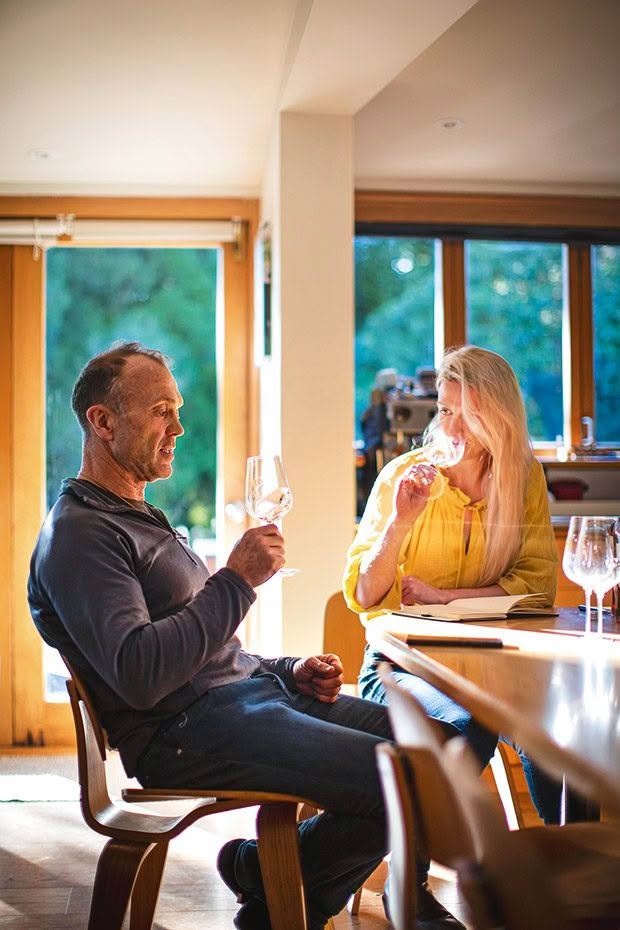
It’s a humbling experience blind-tasting wine. “You have good and bad days; it’s a matter of leaving everything at the door and admitting when you stuffed up — and learning from it.”
The week before Sophie’s final exam, she didn’t touch wine; that way, her palate was more sensitive. Extra care must always be taken eating spicy food; no wine-taster wants dulled taste buds. As for her teeth? Dentist appointments are tax-deductible in the wine industry. Tasting and spitting so much wine requires a special dental gel to stop enamel from wearing away. “It’s quite funny. I’d often get a headache if I’d had a big tasting day even though I hadn’t swallowed any wine, but I think it was the concentration too.”
In addition to the 36 blind-tasting examinations, theoretical knowledge is examined across viticulture, winemaking, business, and contemporary issues that impact the wine industry. Once these exams are passed, candidates research and write a 10,000-word paper on a topic of choice that will ultimately benefit the industry. “It is a journey in humility and knowing how far you can push yourself,” Sophie says.
There are 416 masters of wine globally.
FLUSHED FACE AFTER DRINKING? SOPHIE’S REMEDY
Hot, red, face flushes and headaches following a glass of wine are often blamed on sulfites (SO2) in wine. But according to Sophie’s research for her master of wine qualification, this may not be correct. She read about a group of chemicals called biogenic amines (BAs) produced by bacteria. There’s always a certain amount in the human body.
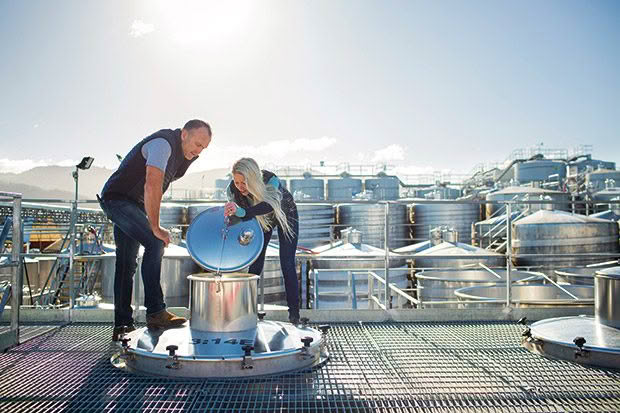
Matt and Sophie are hands-on makers. At the Marlborough winery where they make their Blank Canvas wines, they inspect the tanks to ensure there hasn’t been any leakage. This is where their red wines ferment during vintage, and they’d be here day and night testing them to ensure everything is going as planned.
But when ingested above a certain level (BAs are common in meat, fish, cheese and vegetables), they can trigger allergic-like reactions, such as headaches and rashes. BAs can run rampant when no or low amounts of SO2 are added to wine since wines that contain sulfites stop the creation of biogenic amines by controlling microbial growth. So, ideally, anyone who suspects they’re sensitive to BAs should avoid wines without added sulfites.
